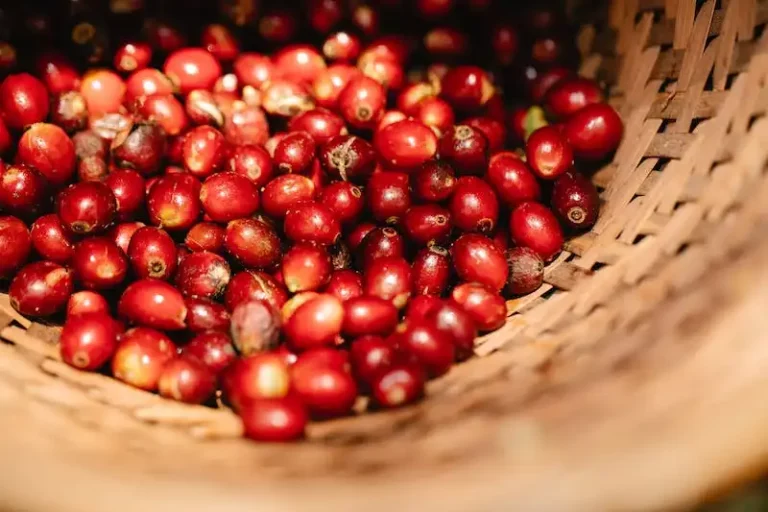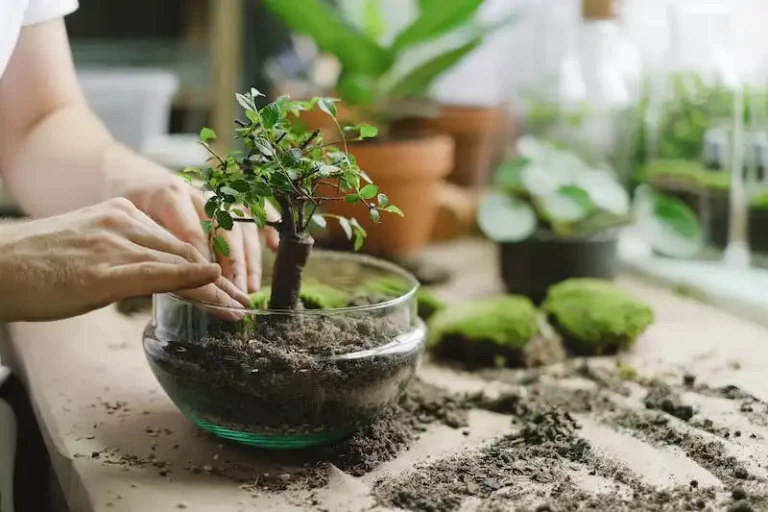The String of Pearls (Senecio Rowleyanus) is a common succulent that can add a unique touch to any room. However, it requires proper care and attention to thrive. In this complete guide, we will explain the different aspects of caring for the String of Pearls to ensure its health and longevity.
1. Repotting: When the plant shows signs of outgrowing its current container, it’s time to repot it. Look for signs like balding or the pot getting too small for the plant. Use a complete succulent repotting mix, and be careful not to damage the pearls as you transfer them into a new pot.
2. Sunlight: The String of Pearls prefers bright but indirect sunlight. It is best placed near a south-facing window or a spot with filtered sunlight. Avoid exposing it to direct sunlight, as it can burn the leaves.
3. Waterings: String of Pearls is drought-tolerant and can store water in its fleshy leaves. Water the plant thoroughly but allow the soil to dry between waterings. Overwatering can lead to root rot, so it’s better to underwater than to overwater.
4. Temperature: String of Pearls prefers temperatures between 70-80°F (21-27°C) during the day and slightly cooler at night. Avoid placing the plant in a location with extreme temperature fluctuations.
5. Pruning and Trimming: You can trim the long stems to maintain a fuller and more compact growth. This will also encourage the plant to produce more pearls. Trim the stems just above a node and use the trimmings to propagate new plants.
6. Pests: Check your String of Pearls regularly for signs of pests, such as aphids. If you notice any infestation, remove the affected parts and treat the plant with an insecticidal soap or neem oil. Keep the plant isolated to prevent the pests from spreading to other plants.
7. Fertilizing: String of Pearls doesn’t require frequent fertilizing. However, you can use a diluted succulent fertilizer once every 2-3 months during the growing season to nourish the plant.
8. Propagation: A string of Pearls can be propagated through stem cuttings. Cut a healthy stem with a few pearls and place it in well-draining soil. Keep the soil slightly moist until new roots form.
String of Pearls Care Guide
Welcome to our String of Pearls Care Guide! You’ve come to the right place if you are a fan of succulents like us. String of Pearls, also known by its scientific name Senecio rowleyanus, is a unique and beautiful succulent perfect for adding a touch of greenery to any space. Its long, trailing stems filled with little pearl-like leaves make it a standout plant wherever it is grown.
Watering: String of Pearls are succulents and they prefer to be watered less frequently. You should only water your plant when the soil is completely dry. Overwatering can lead to root rot and cause the pearls to become mushy.
Light: String of Pearls like bright, indirect light. They are not fans of direct sunlight and can easily get burned. Place your plant somewhere where it can receive plenty of light but is not exposed to harsh rays.
Temperature: String of Pearls prefer room temperature and can tolerate temperatures as low as 50°F (10°C) and as high as 85°F (29°C). Avoid placing it in areas with extreme temperature fluctuations.
Pruning: String of Pearls do not require much pruning. However, if you notice any leggy or balding stems, you can trim them back to promote fuller growth. Use sharp scissors or pruning shears to make clean cuts.
Propagation: String of Pearls can be propagated through stem cuttings. Take a healthy stem and place it on well-draining soil. Water sparingly and the cutting should develop roots in a few weeks.
Pest control: Aphids are the most common pests that can affect String of Pearls. If you notice any signs of infestation, please take appropriate measures to eliminate them. You can contact your local garden center for advice on pest control products that are safe for succulents.
Repotting: Repotting should be done every 2-3 years or when the plant has outgrown its current container. Use a well-draining soil mix and a slightly larger planter to allow the roots room to grow.
Complete Care Instructions: To access the complete care guide, please verify that you are a human by clicking the “I’m not a robot” checkbox. Then, follow the instructions on the screen to access the guide.
Note: This String of Pearls Care Guide is a general overview and may not address all specific care needs. If you have any concerns or questions about your plant’s health and care, please consult a professional grower or horticulturist.
Nourishing your plants is essential for their growth and overall health. To ensure your plants thrive, it’s important to provide them with the right conditions and care. Here are some tips to nourish your plants and help them flourish:
| Watering | Water your plants thoroughly, but avoid overwatering. Succulents, for example, prefer less frequent watering. It’s better to underwater them than to make the soil mushy and potentially damage the roots. Please note that watering requirements can vary depending on the plant, so following specific watering instructions is essential. |
| Light | Most plants need access to light to survive. Place your plants somewhere with good natural light, preferably near a window. If you are growing plants indoors, provide them with artificial light sources. |
| Temperature | Each plant has its temperature preferences, so providing the right conditions is essential. Some plants like warm temperatures, while others prefer more relaxed environments. Refer to a temperature guide to ensure your plants are in the ideal range. |
| Repotting | If your plant has outgrown its current planter and the roots are starting to become root-bound, it’s time to repot. Repotting allows the roots more space to grow and helps prevent them from becoming tangled and suffocated. Follow specific instructions for each plant on when and how to repot. |
| Pruning | Trimming and pruning your plants is an integral part of their care routine. Regular pruning helps remove dead or dying parts, encourages new growth, and maintains the overall shape and health of the plant. Be sure to use clean pruning tools to avoid spreading diseases. |
| Pest Control | Monitor your plants regularly for signs of pests, such as aphids. If you notice an infestation, take immediate action to control the pests. Various methods for pest control exist, including natural remedies and commercial products. Just make sure to follow the instructions carefully to protect your plants. |
By following these nourishing tips, you can give your plants the care they need to stay healthy and thrive. Remember to always consider your plants’ specific needs, and don’t hesitate to contact us if you have any questions or need further assistance.


